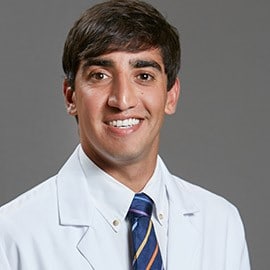
 Approximately 50% of all sports-related injuries for pediatric athletes (children ages 6 to 12 and adolescents ages 13-18) are due to overuse. Overuse injuries can be caused by training errors, improper technique, excessive sports training, inadequate rest, muscle weakness and imbalances and early specialization.
Approximately 50% of all sports-related injuries for pediatric athletes (children ages 6 to 12 and adolescents ages 13-18) are due to overuse. Overuse injuries can be caused by training errors, improper technique, excessive sports training, inadequate rest, muscle weakness and imbalances and early specialization.
Acute overuse injuries occur when there is too much activity, too quickly. Chronic overuse injuries result from repetitive activities over the course of several weeks or months. Symptoms of overuse injuries tend to be gradual, resulting in athletes going undiagnosed and untreated for longer periods of time. Long-term consequences include loss of playing time, reduced function, and psychological exhaustion.
Overuse injuries are most frequent in:
- Rowing
- Baseball
- Volleyball
- Football
- Cross country/track & field
- Swimming
Women’s sports, such as field hockey, soccer, volleyball, and cross country have the most overuse injuries.
Common overuse injuries are:
- General stress
- Inflammation and tendinitis
- Injuries to the growth plate (i.e., Sever’s disease, little league shoulder, little league elbow, Osgood-Schlatter)
- Stress fractures
April is National Youth Sports Safety Month. It is important to take certain preventative measures to ensure the young adults in our lives are kept healthy and in the game.
- Avoid specialization and repetitive sports activity at a young age. Athletes who participate in a variety of sports tend to have fewer injuries and play longer.
- Limit training in one sport to no more than five days a week with at least one day off from any organized physical activity.
- Take time off from one sport for two to three months each year.
- Pediatric athletes should only play one overhead throwing sport at a time and should avoid playing the same sport year-round. Participating in multiple sports throughout the year provides a wider range of skills.
- Although there are not injury thresholds for specific sports or age ranges, data suggest limiting vigorous physical activity to 16 to 20 hours a week for pediatric athletes.
Conduct a pre-participation physical exam on an annual basis to detect life-threatening conditions as well as factors that may predispose the athlete to overuse injuries.









